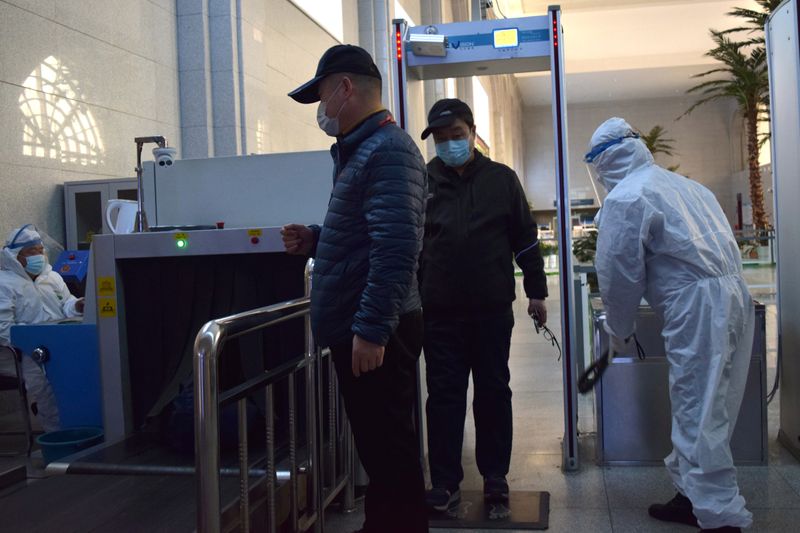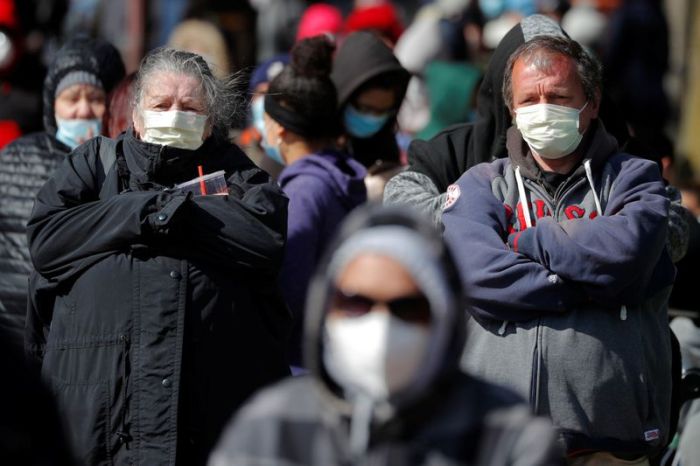BEIJING (Reuters) – China on Sunday reported 16 new coronavirus cases but no deaths while authorities remained on guard against a major resurgence and monitored the spread of cases in Heilongjiang province.
The National Health Commission on Sunday also issued a notice asking for improvement in testing capacity and quality nationwide.
Nine of the new cases were imported infections, data from commission showed.
Authorities reported that total confirmed cases across mainland China had risen to 82,735 with 4,632 deaths as of April 18.
The northeastern province of Heilongjiang has seen a rise in infected travellers arriving from Russia in recent weeks, and is now battling to contain a flare-up in local cases.
Heilongjiang has reported 39 new local cases in the past 10 days, or more than 50% of all new 73 locally transmitted cases reported in the mainland during the same period.
Most were related to one imported case in the provincial capital, Harbin.
On Friday, 18 officials in Harbin, including a vice mayor, were punished.
To help contain the outbreak, the Heilongjiang government is cautioning against family gatherings, cross infections at hospitals, and slow reporting in epidemic investigations, it said on the provincial government’s website.
“The biggest political task at present is to stop the rebound and spread of the epidemic,” Wang Yongkang, vice governor of Heilongjiang, was quoted as saying.
Elsewhere in mainland China, all areas in central Hubei province including Wuhan, the epicentre of the outbreak in China, are now considered low risk.
However, a Beijing central district is seen as high-risk, according to a social media post by the State Council, or Cabinet.
On April 15, the Chinese capital reported three local cases, all of which were linked to an imported infection.
Areas that are considered of medium-risk in China include two districts in Harbin, the city of Suifenhe in Heilongjiang, two districts in the southern city of Guangzhou and Jiaozhou city in eastern Shandong province.
Separately, authorities reported 44 new asymptomatic cases of coronavirus, including three which were imported.
Such cases, where patients test positive but show no clinical symptoms such as a cough or fever, are excluded from China’s tally of confirmed cases.
TESTING
In urging better testing, the National Health Commission said all large general hospitals need to set up laboratories that meet certain requirements and can conduct coronavirus testing independently.
Since March, an average 54,000 tests have been conducted a day in Hubei province and that rose to 89,000 tests on April 17, Liu Dongru, a Hubei health commission official, told a news conference on Sunday.
In Beijing, the number of institutions able to conduct nucleic acid testing has risen to 50 from 17 in early February, a municipal health commission official said on Sunday.
In areas under great pressure, especially at land borders, local governments should help county-level medical institutions obtain nucleic acid testing capability, the commission said.
Testing should be conducted by qualified medical institutions and independent medical laboratories, it said, adding that training for medical staff should be stepped up and testing operations standardised to reduce problems with the accuracy of testing.
(Reporting by Judy Hua, Li Hongwei and Ryan Woo; editing by Sam Holmes and Jason Neely)



















